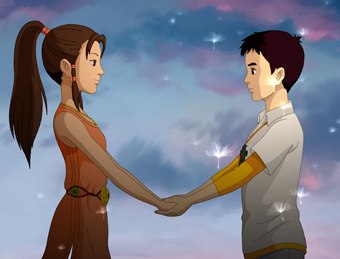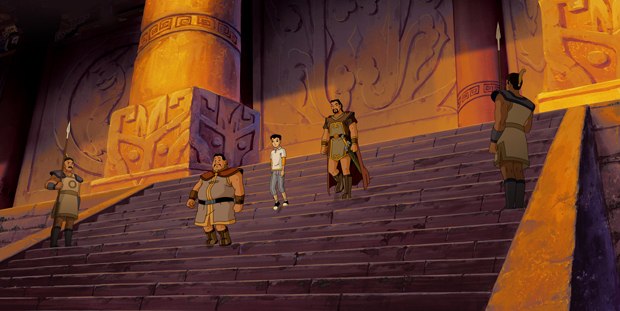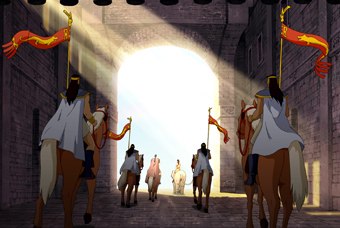The director of China's biggest animated feature discusses its hand-drawn importance.
The Dreams of Jinsha marks China's most ambitious animated feature. Currently playing in LA and shortlisted for an Oscar nomination, the $11 million hand-drawn fantasy-adventure was produced by Hangzhou C& L Digital and distributed by Huaxia Film Distribution.
The story revolves around a selfish middle-school boy, Xiao Long, who is transported 3,500 years back in time to the opulent and magical kingdom of Jinsha and discovers his true destiny in helping preserve the natural environment threatened by an evil energy. Jinsha, which was actually discovered as a real culture in 2001 as a result of an archaeological find, serves a similar function here as Avatar'sPandora. After gaining the trust of the beautiful young princess Hau'er, Xiao Long matures into a responsible young boy who learns to coexist harmoniously with others.
Jinsha director Chen Deming was in town recently for a screening and discussed his first foray into animation through an interpreter. "I was inspired by the true story of the Jinsha kingdom after visiting the Jinsha Museum and seeing all of the amazing relics on display."
The film took five years to produce as a result of meticulous research and painstaking drawings. "Every single detail of the characters in every single cel is drawn by hand, hand-drawn pictures take more time and energy than computer-generated images, but we believe it looks more realistic and alive," Chen suggests.
"This process involved 500,000 hand-drawings, so the challenge and difficulty, as you could imagine, was that there were many people involved (more than 500), and this is what they were focused on. They wanted to make sure the quality was great. Of course, there was professional help to put those hand-drawings together into animation -- we sent them to another company to be digitized -- but then they came back for revisions."
The animation was primarily done in Hangzhou (at Sheng Shi Long Animation) with two other satellite studios helping out, according to the director, who was assisted by two animation directors. "In China, high-quality staff is hard to find in this field," Chen continues, "so that was the first challenge. The second challenge is that every character is not drawn by one person. For example, if you have 10 people working on Xiao Long, and he moves an arm, it takes a long time to communicate and consolidate all the pictures together. They have to keep drawing and revising and when we have to do a final walk through, there is still a lot of communication and work to be done. Getting Xiao Long and the others to look real was difficult."
It was hard enough capturing the look and feel of modern China; they also had to conjure the Jinsha kingdom based on the iconographic relics on display in the museum as well as their own imaginations. "The reason why it took such a long to design this movie is because we spent a lot of time thinking about the Jinsha kingdom. It's a visual fiction and took a long time to create the living environment."
In addition, they had to draw from folklore to conjure a host of fantasy creatures that populate Jinsha, such as spirits, elves and fairies. Naturally, a sense of graphic design is emphasized throughout, particularly in the work on the palace of the kingdom and the contemporary street scenes that reflect modernity.
They also utilized various Chinese landscapes as backdrops for Jinsha, including Jiuzhaigou Valley, the most popular national park in China, known for its dozens of blue, green and turquoise-colored lakes. This was important stylistically but also as a way of reinforcing the distinctive Chinese heritage of the movie.
Indeed, introducing core values was important to Chen. With such a strict focus in China on one child in each family, the younger generation tends to be selfish and self-centered. The director wants to therefore make an impact on youngsters in China and across the world. "In China, there are 360 million children and that was the biggest influence on me -- to bring them a story about love and courage and to keep their childhood as pure as possible," Chen suggests.
As for the film's impact on the Chinese animation industry, it has already paid dividends, since he will soon embark on a follow-up animated feature. "First, from a technical point of view, for most, this is the first animation production, so on many levels, they had to overcome many, many challenges to make this movie," the director offers. "Second, from the children's point of view, this movie is very different because it travels from the modern to the ancient. This is a breakthrough movie for them -- and the children tend to like it a lot."
Bill Desowitz is senior editor of AWN & VFXWorld.










